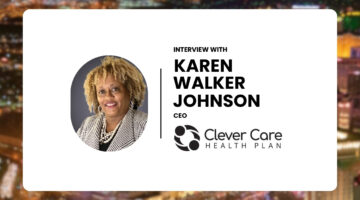
Data-Driven Decisions: Unlocking Strategic Financial Performance in Healthcare
Data is not optional; it is essential to financial stability and strategic growth. The organizations that thrive will be those that use data to lead, not follow.

Data is not optional; it is essential to financial stability and strategic growth. The organizations that thrive will be those that use data to lead, not follow.

Some hospitals are turning to AI to help manage declining revenue and financial pressure, but one expert says success depends on more than just buying new tech. Prashant Karamchandani of Chartis urges health systems to pair AI adoption with foundational work like change management, continuous improvement and operating model redesign.

Clever Care CEO discussed the importance of culturally-competent care.

As healthcare leaders look for the low-hanging fruit for AI and automation investments in the revenue cycle, there are three things that should be considered to achieve maximum impact on labor effectiveness.

Whether trying to see more patients, retain more staff, expand the organization’s technology stack or bring more dollars in the door, it’s not uncommon for professionals to want to maximize their resources amidst a market influx.

As our industry continues its path toward value-based care, evolving payer models, and increasingly stringent regulations, revenue cycle processes will become even more complex. Providers can prepare by following these steps.

We know from everyday purchasing of goods and services that you have to combine what you’re getting with what you’re paying for that good or service. But how does this basic consumer supplier concept play out in US healthcare?

Hospitals are facing increasingly burdensome policies from commercial insurers, leading to problems with cash flow and patient safety. Hospital executives think federal regulators need to enact stricter policies that require payers to operate on faster timelines, as well as provide more transparency into their reasons for denying claims.

In an age where consumers have more options than ever about where to receive their care, improving the financial experience through embedded finance can give providers an advantage in an increasingly competitive marketplace.

While hospitals have contingency plans for events like power outages and extreme weather — backup generators, secondary chillers, and fiber for internet coverage — they can typically neglect vulnerabilities in the revenue cycle. Here are five proactive measures for hospitals and revenue cycle management/clearing house partners.

SmarterDx — an AI startup that provides clinical review and quality audits for medical claims — closed a $50 million Series B funding round, bringing its total funding to date to $71 million.

Jeff Bak shares what is needed in making healthcare more affordable and sustainable for employees.

A health system's failure to offer patients with digital payment options could lead to slower collection times, create a disjointed patient financial experience, and result in decreased patient satisfaction and loyalty. At HIMSS23, Atrium Health's vice president of revenue cycle management shared how his system integrated payment into its digital front door and gave pointers to hospitals looking to do the same.

An intelligent authorization platform relies on AI and machine learning to extract patient-specific data from a number of sources including the EHR. This helps health plans better anticipate, manage and optimize member outcomes.

Revenue cycle company R1 acquired Cerner’s RevWorks business. The company will also acquire commercial, non-federal clients as part of the deal.

Olive AI, a startup that uses AI to automate error-prone administrative tasks, raised $51 million in funding. The company has experienced a recent growth spurt, expanding to more than 500 hospitals across the U.S.

Rivet, a startup that helps providers keep track of insurance contracts and billing, closed an $8.25 million funding round. Technology venture capital company Menlo Ventures led the funding round.